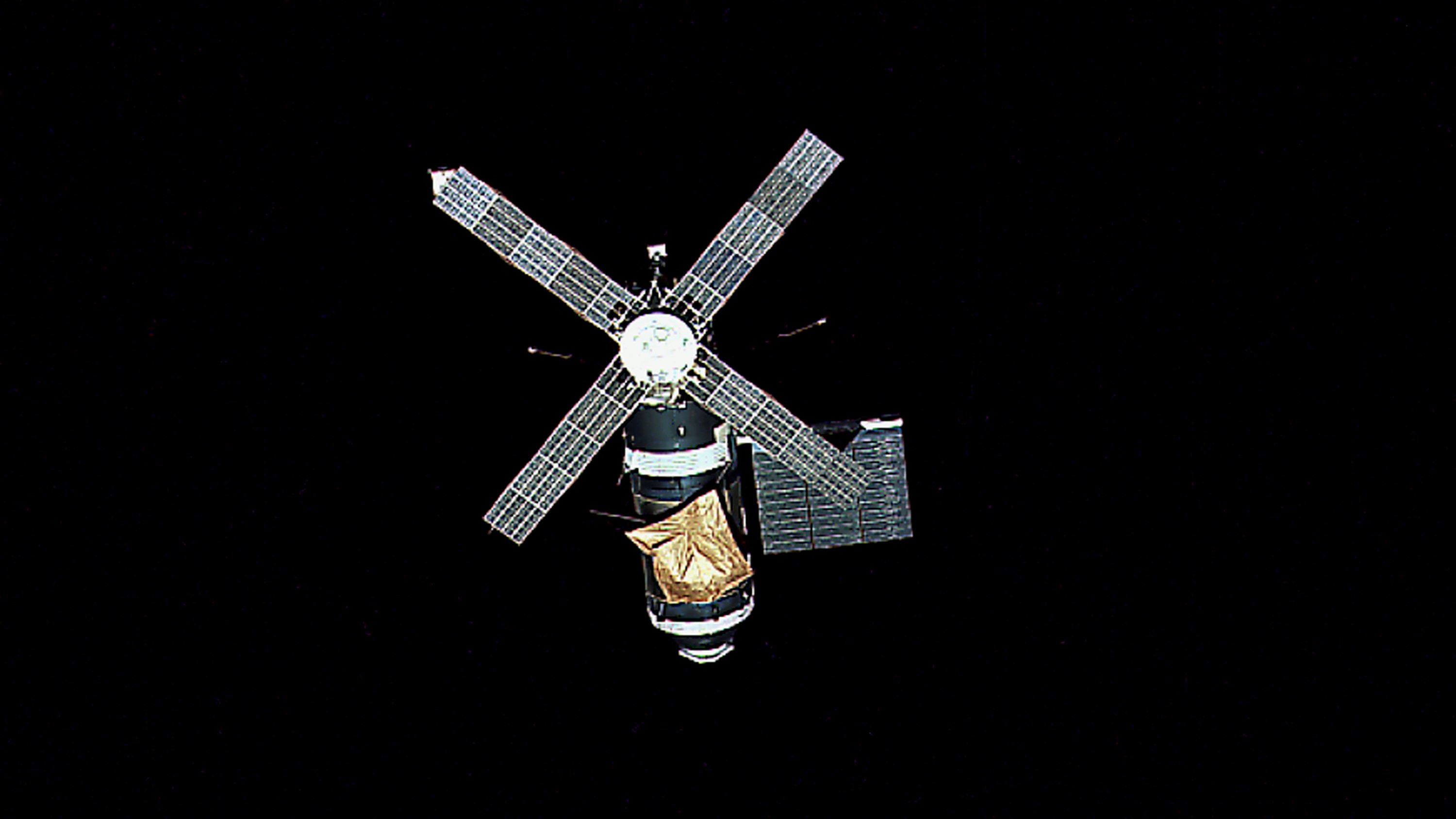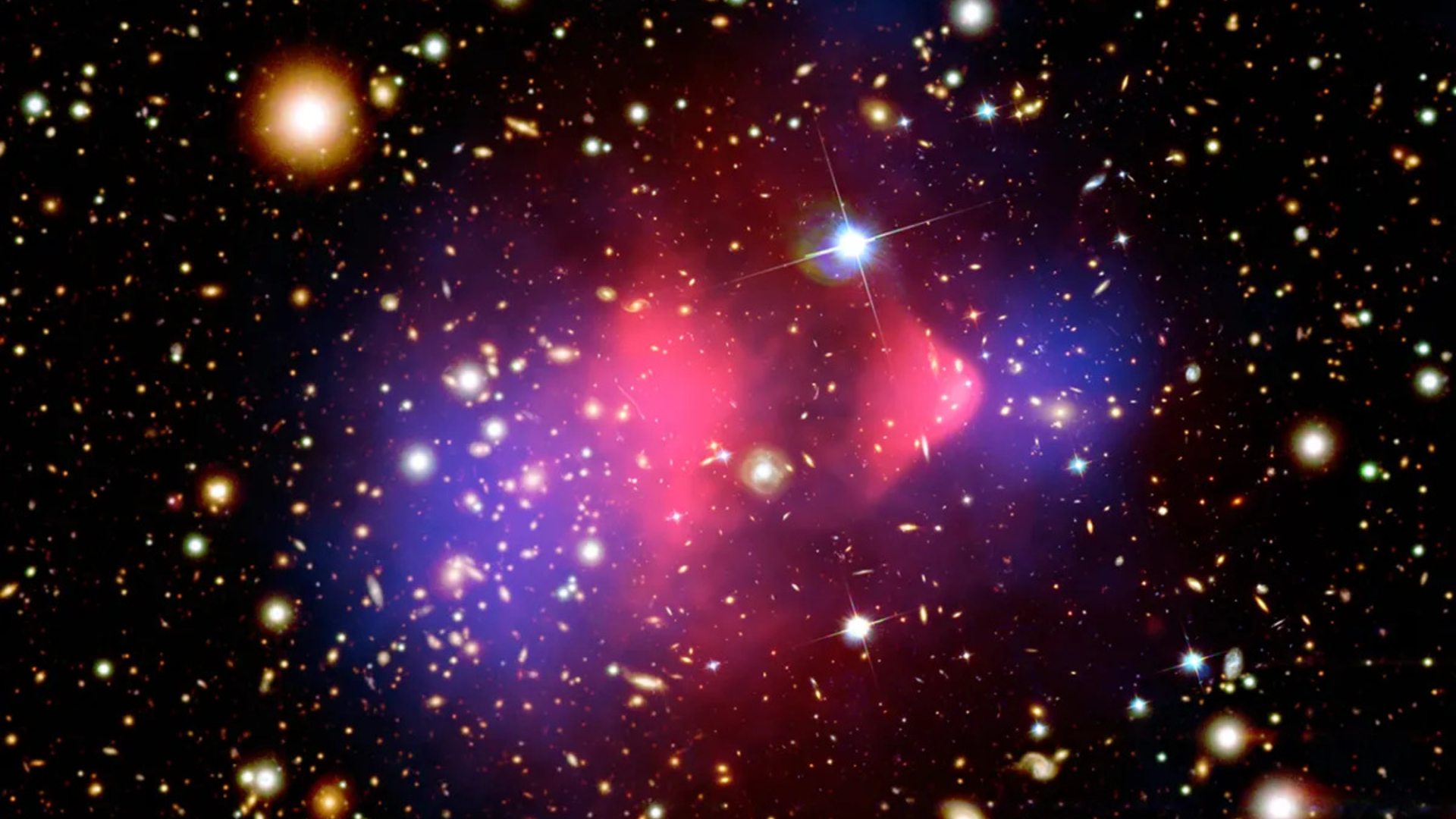Skylab: First U.S. space station
The space station was the nation's first effort at long-term human space missions.

Skylab was the first space station operated by the United States.
It spent six years orbiting Earth until its decaying orbit caused it to re-enter the atmosphere. It scattered debris over the Indian Ocean and sparsely settled areas of Western Australia.
Three successive three-man crews lived on board the station for 28, 56 and 84 days in orbit — an American record that stood until the shuttle era. Astronauts aboard the station conducted 270 experiments in biomedical and life sciences, solar astronomy, Earth observations and materials processing. Among the most important were investigations on the astronauts' physiological responses to long-duration spaceflight.
Various NASA centers had kicked around ideas for a space station for years before Skylab launched. However, the agency was very focused on the space race and moonshots that dominated public consciousness in the 1960s.
As Apollo began to wind down in the early 1970s, NASA began an Apollo Applications Program to fly unused hardware from the moon program. One idea, proposed by famous Apollo rocket engineer Wernher von Braun, would be to build a space station out of an unused rocket stage. The design evolved over the years as NASA struggled with reduced funding.
What was Skylab made up of?
Skylab consisted of four major components: the Orbital Workshop (OWS), the Airlock Module (AM), the Multiple Docking Adapter (MDA) and the Apollo Telescope Mount (ATM). The Apollo command and service module that transported crews to Skylab remained attached to the station throughout a crew's occupancy.
The OWS, which served as the main working, living and sleeping compartment for the crews, was converted from the upper stage of a Saturn rocket. It contained exercise equipment, a galley, and many scientific experiments, in particular for life sciences studies. Two large solar arrays on the OWS provided 12.4 kilowatts of power to the station.
Breaking space news, the latest updates on rocket launches, skywatching events and more!
The AM enabled astronauts to conduct spacewalks, and the MDA included a prime and backup docking port for the Apollo spacecraft. The second docking port enabled a rescue capability. A second Apollo capsule carrying two astronauts could come to the aid of the resident crew if their spacecraft became disabled, and all five astronauts returned to Earth in the new spacecraft. The MDA also housed the Earth Resources Experiment Package.
The ATM contained telescopes for solar observations and four solar arrays for additional power. Once in orbit, the station weighed 170,000 lbs.
Photos: Skylab, the 1st U.S. space station
A rocky start to Skylab
Skylab launched into space on May 14, 1973. However, a micrometeoroid shield, which was supposed to shelter Skylab from debris and also act as a thermal blanket, accidentally opened about 63 seconds into the launch. The shield and a solar array tore off, and another solar array was damaged. "When the meteoroid shield ripped loose, it disturbed the mounting of workshop solar array wing No. 2 and caused it to partially deploy," NASA wrote. "The exhaust plume of the second stage retro-rockets impacted the partially deployed solar array and literally blew it into space."
The space station experienced communications problems with the antenna as a result of the incident, but that was the least of NASA's worries. Without protection from the micrometeoroid shield, temperatures inside the station rose to intolerable levels. Also, the remaining solar arrays were only generating 25 watts of power, according to NASA. Flight controllers faced a dilemma. If they oriented the station toward the sun to maximize power generation, temperatures rose too high for the crew and equipment. But an attitude that minimized the heat significantly reduced power generation.
Workers at NASA's Marshall Space Flight Center scrambled to stabilize the station. They eventually decided to put the station in an attitude that would minimize overheating.
Meanwhile, the launch of the first crew — Commander Charles "Pete" Conrad, pilot Paul J. Weitz and science pilot Joseph P. Kerwin — was delayed as the astronauts began training for the new mission to make the station habitable. Launching 10 days later, on May 25, the crew's first challenge, just hours after launch, was to attempt to deploy the solar array during a spacewalk. However, initial attempts met with no luck as a metal strip holding it down refused to give way.
Crewmembers emerged from an expected communications blackout in a foul mood, according to an official NASA account of the mission. "The astronauts were venting their frustration with four-letter words, while Houston repeatedly tried to remind them that communication had resumed," NASA wrote.
Realizing the tools they had with them that day would not work, Conrad abandoned the exercise and focused on trying to dock his spacecraft with the station. Unfortunately, the docking mechanism failed and the crew had to depressurize the spacecraft and bypass electrical connections to achieve it.
In subsequent days, Conrad's crew erected a sun shade, successfully deployed the stuck array, and began operational work aboard the station. While the incident was frustrating for the teams involved, it also demonstrated that it was possible to fix a badly damaged space station while it is in orbit.
The psychology of astronauts
With the worst of the mechanical problems behind, NASA and the three Skylab crews focused on matters pertaining to long-duration spaceflight. Everything from the crew's exercise time to nutritional requirements to scheduling came under scrutiny and debate.
Skylab's second crew — led by Apollo 12 moonwalker Alan Bean, with pilot Jack R. Lousma and scientist Owen K. Garriott — impressed NASA with its productivity. The crew finished its assigned tasks much faster than expected and clamored for more. While the pace was impressive, it set within NASA some false expectations for how much a group of astronauts could accomplish.
Things weren't always that smooth between the ground and space. Skylab's third crew in particular complained repeatedly about being overloaded with tasks and superhuman expectations. Some have said the crew did a mutiny in orbit, although others characterize it more as a temporary refusal to do more work.
Whatever the situation, the unhappiness prompted a discussion between the ground and space where the two sides brought their mutual concerns to the table. Things never got that bad again between the crew and the ground controllers, but none of the astronauts — Commander Gerald P. Carr, pilot William R. Pogue and scientist Edward R. Gibson — flew in space again.
Carr later said he regretted having waited for several weeks before airing his concerns. "We swallowed a lot of problems for a lot of days because we were reluctant to admit publicly that we were not getting things done right," he said in a NASA account of Skylab. "That's ridiculous, [but] that's human behavior."
In between adapting to a longer mission, crews focused on the science. A solar telescope mounted on the station allowed the astronauts to observe solar flares in action, although an early crewmember joked that he was left wishing for "supernormal" flares. One crew also observed Comet Kohoutek as it swung closest to Earth.
Skylab's last crew left in February 1974, leaving the station in orbit. NASA had planned to bring more crews into orbit, but financial concerns and the run-up to the shuttle program turned attention elsewhere. An effort to send the shuttle there also fell through.
The space station's orbit decayed faster than expected due to intense solar activity heating up Earth's atmosphere. NASA, faced with the inevitable, adjusted the station as best as it could so it wouldn't hit populated areas upon re-entering on July 11, 1979. A math mistake led to pieces falling in Australia, but fortunately, nobody was hurt.
Skylab's legacy
While Skylab's end marked a temporary stop to NASA's work on long-duration spaceflight, the agency resumed long flights during the shuttle-Mir program in the 1990s in partnership with Russia and its space station, Mir. That work laid part of the groundwork for the 16-nation cooperation on the International Space Station. In 2015-16, NASA astronaut Scott Kelly and Russian cosmonaut Mikail Kornienko spent nearly a year on the orbiting complex. Most crews tend to remain there for five or six months, however.
Unlike during the days of Skylab, astronauts today have regular private sessions with an assigned doctor where they can air concerns about workload, family life or anything else that might be bothering them — without repercussions and without the fear that the public might be listening in. The doctor can then search for solutions among managers on the ground, freeing up time for crews to work in orbit.
Astronauts also follow a strict exercise regimen, receiving about two hours a day to run on a treadmill, use an exercise bike or lift using a machine that simulates weight-lifting. Medical studies have shown that this sort of exercise reduces bone loss, muscle atrophy and other problems in spaceflight.
NASA is planning on constructing a lunar space station in the 2020s, which is called the Deep Space Gateway. This would allow astronauts to do long-duration stays at a location further from Earth — valuable practice for colonizing Mars, while still being close enough to quickly turn around and go home if a problem arises. It is unclear who else will participate in this venture, but NASA is seeking international collaborators.
In 2018, a documentary film "Searching for Skylab" was fully funded on Kickstarter. The filmmakers argued that Skylab is not a well-remembered mission in the public eye. In the film, Skylab astronauts and ground workers explain the work that went into the missions and the first U.S. space station's legacy.
Join our Space Forums to keep talking space on the latest missions, night sky and more! And if you have a news tip, correction or comment, let us know at: community@space.com.

Elizabeth Howell (she/her), Ph.D., was a staff writer in the spaceflight channel between 2022 and 2024 specializing in Canadian space news. She was contributing writer for Space.com for 10 years from 2012 to 2024. Elizabeth's reporting includes multiple exclusives with the White House, leading world coverage about a lost-and-found space tomato on the International Space Station, witnessing five human spaceflight launches on two continents, flying parabolic, working inside a spacesuit, and participating in a simulated Mars mission. Her latest book, "Why Am I Taller?" (ECW Press, 2022) is co-written with astronaut Dave Williams.

